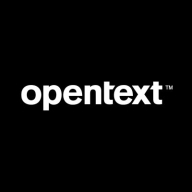


Find out what your peers are saying about Microsoft, CrowdStrike, SentinelOne and others in Endpoint Protection Platform (EPP).
| Product | Market Share (%) |
|---|---|
| Microsoft Defender for Endpoint | 10.0% |
| BigFix | 1.2% |
| OpenText Core Endpoint Protection | 0.8% |
| Other | 88.0% |



| Company Size | Count |
|---|---|
| Small Business | 30 |
| Midsize Enterprise | 12 |
| Large Enterprise | 66 |
| Company Size | Count |
|---|---|
| Small Business | 79 |
| Midsize Enterprise | 34 |
| Large Enterprise | 87 |
| Company Size | Count |
|---|---|
| Small Business | 35 |
| Midsize Enterprise | 2 |
| Large Enterprise | 2 |
HCL BigFix is a powerful patch management tool that enables organizations to simply control their patch management operations. It is designed so that IT security and operations teams can collaborate in the most effective way possible. Users that employ BigFix can find and fix issues with their endpoints faster than those that employ its competitors. It comes with thousands of security checks that can be deployed quickly and easily. These enable users to safeguard themselves from a wide variety of digital threats.
HCL BigFix Benefits
Some of the ways that organizations can benefit by choosing to deploy HCL BigFix include:
BigFix Features
Reviews from Real Users
HCL BigFix is a highly effective solution that stands out when compared to most of its competitors. Two major advantages it offers are its auto-patching capability and its user-friendly tools.
Santhosh K., the chief executive officer of Catnip Infotech Private Limited, writes, “The second valuable feature is, BigFix also has an auto patch updating feature, where the latest patches, and what is required for my system are automatically downloaded and kept ready for me. The solution applies the patch and notifies me after applying the patch. BigFix also gives me a ping saying that I should reset my system within a certain period of time, while the patch is being applied. Let's say, the patch is being applied and if there's an issue, the solution can revoke the applied patch, and revert back to the old state.”
Benedikt S., an application administrator, says, “It's very straightforward. The usability is very close to everyday technical tools that you use as a systems administrator. So it's quite user-friendly.”
Microsoft Defender for Endpoint is a comprehensive security solution that provides advanced threat protection for organizations. It offers real-time protection against various types of cyber threats, including malware, viruses, ransomware, and phishing attacks.
With its powerful machine-learning capabilities, it can detect and block sophisticated attacks before they can cause any harm. The solution also includes endpoint detection and response (EDR) capabilities, allowing organizations to quickly investigate and respond to security incidents. It provides detailed insights into the attack timeline, enabling security teams to understand the scope and impact of an incident.
Microsoft Defender for Endpoint also offers proactive threat hunting, allowing organizations to proactively search for and identify potential threats within their network. It integrates seamlessly with other Microsoft security solutions, such as Microsoft Defender XDR, to provide a unified and holistic security approach. With its centralized management console, organizations can easily deploy, configure, and monitor the security solution across their entire network.
Microsoft Defender for Endpoint is a robust and scalable security solution that helps organizations protect their endpoints and data from evolving cyber threats.
OpenText Core Endpoint Protection offers cloud-managed endpoint security with AI integration, providing real-time protection and lightweight performance. It ensures low system impact, seamless cloud integration, and cost-effective security solutions for various devices.
OpenText Core Endpoint Protection is a comprehensive endpoint security platform utilized by managed-service providers for antivirus and firewall functionality across servers, workstations, and mobile devices. It employs AI for robust threat detection, integrating with cloud applications for real-time updates. Multi-layered security features include malware protection, network defense, and DNS protection. Although connectivity and threat reporting need improvement, this platform extensively supports remote device management and integrates efficiently with Active Directory policies.
What are the key features of OpenText Core Endpoint Protection?OpenText Core Endpoint Protection finds application in industries requiring stringent data protection and peace of mind over device security. Managed-service providers implement this for comprehensive antivirus and firewall features, safeguarding multi-device networks. It is particularly useful for DNS protection and integrating with Active Directory policies, enabling secure yet flexible operations across sectors.